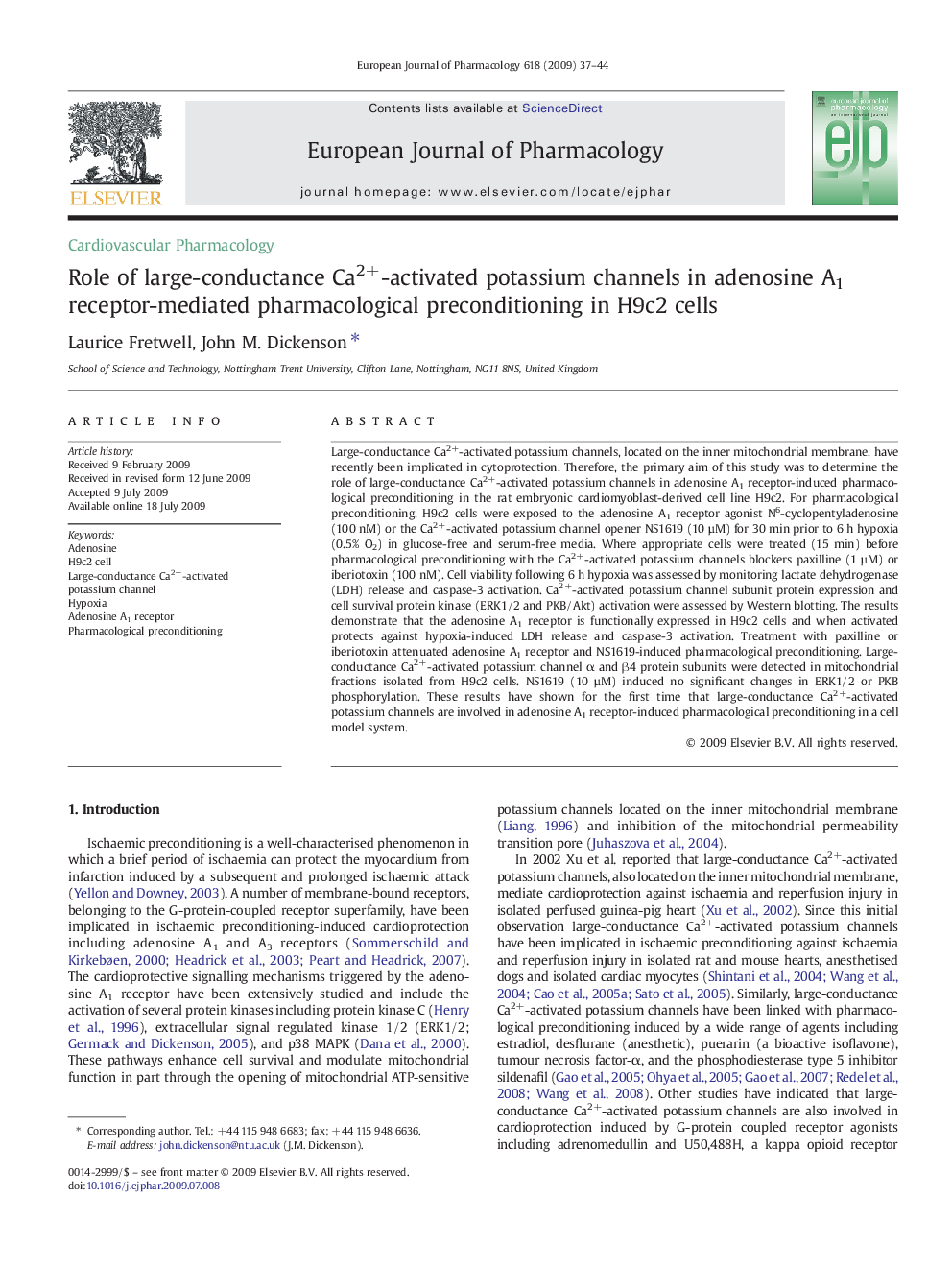| Article ID | Journal | Published Year | Pages | File Type |
|---|---|---|---|---|
| 2534115 | European Journal of Pharmacology | 2009 | 8 Pages |
Large-conductance Ca2+-activated potassium channels, located on the inner mitochondrial membrane, have recently been implicated in cytoprotection. Therefore, the primary aim of this study was to determine the role of large-conductance Ca2+-activated potassium channels in adenosine A1 receptor-induced pharmacological preconditioning in the rat embryonic cardiomyoblast-derived cell line H9c2. For pharmacological preconditioning, H9c2 cells were exposed to the adenosine A1 receptor agonist N6-cyclopentyladenosine (100 nM) or the Ca2+-activated potassium channel opener NS1619 (10 µM) for 30 min prior to 6 h hypoxia (0.5% O2) in glucose-free and serum-free media. Where appropriate cells were treated (15 min) before pharmacological preconditioning with the Ca2+-activated potassium channels blockers paxilline (1 µM) or iberiotoxin (100 nM). Cell viability following 6 h hypoxia was assessed by monitoring lactate dehydrogenase (LDH) release and caspase-3 activation. Ca2+-activated potassium channel subunit protein expression and cell survival protein kinase (ERK1/2 and PKB/Akt) activation were assessed by Western blotting. The results demonstrate that the adenosine A1 receptor is functionally expressed in H9c2 cells and when activated protects against hypoxia-induced LDH release and caspase-3 activation. Treatment with paxilline or iberiotoxin attenuated adenosine A1 receptor and NS1619-induced pharmacological preconditioning. Large-conductance Ca2+-activated potassium channel α and β4 protein subunits were detected in mitochondrial fractions isolated from H9c2 cells. NS1619 (10 µM) induced no significant changes in ERK1/2 or PKB phosphorylation. These results have shown for the first time that large-conductance Ca2+-activated potassium channels are involved in adenosine A1 receptor-induced pharmacological preconditioning in a cell model system.
